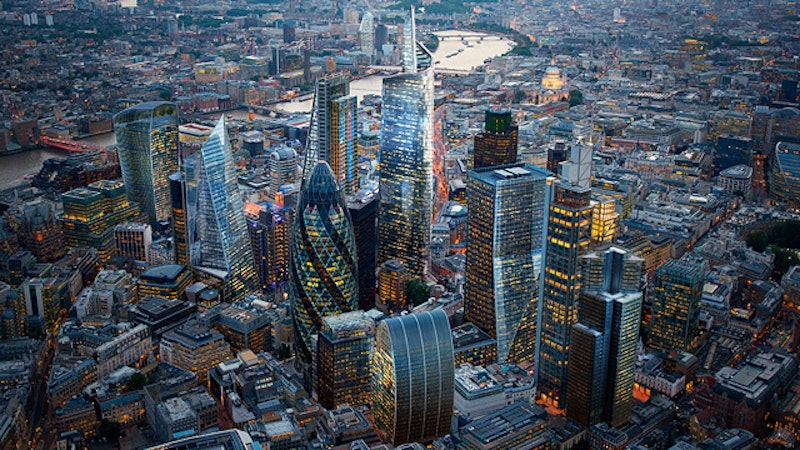- Written by
- Vikki Herbert, Partner
As we gradually emerge from lockdown and businesses try to reopen, commercial property must adapt. All business premises will need to change in some way, to allow for long-term social distancing and to limit the spread of infection.
As we gradually emerge from lockdown and businesses try to reopen, commercial property must adapt. All business premises will need to change in some way, to allow for long-term social distancing and to limit the spread of infection. Commercial landlords and tenants will need good legal advice to help them navigate some thorny issues about who is responsible for new health and safety measures, who has the right to make physical alterations, and who is going to pay for them.
‘Over the next few months, commercial property is going to change in ways we would never have imagined just a few months ago,’ says Yildiz Betez, commercial property solicitor. ‘Owners and occupiers will need to cooperate more closely than ever before.’
Government guidance
One of the Government’s first steps in its plan to ease the lockdown and restart the economy was to issue guidance about the changes it expects in various types of commercial premises. The range of separate notes includes recommendations for offices, shops and warehouses, as well as public open spaces.
The first step for anyone who owns or occupies business premises is to carry out a risk assessment, to identify aspects of the property that should change. Although the detailed guidance is different for each sector, many of the suggested measures are relevant for all types of commercial property. For example:
- more handwashing/sanitising facilities throughout buildings;
- increased cleaning, especially of shared toilets and catering points;
- hands-free entry and exit systems, to reduce touch points;
- more space/new routes for people entering and leaving buildings;
- one-way systems for people using buildings;
- floor markings and screens to keep people a safe distance apart;
- reduced lift capacity, to avoid crowding;
- extended building opening hours to allow staggered working; and
- extra space for car and bicycle parking, and more showers and lockers to help workers avoid public transport.
Some of these things, such as floor tape and one-way systems, can be achieved relatively quickly and cheaply. Others, such as a new entry system, extra cleaning, longer opening hours and more parking and cycling facilities, will require both capital investment and increased day-to-day spending on services. The key questions for landlords and tenants to answer are who is responsible for all these measures and who pays for them.
Responsibilities under the existing health and safety regime
The Government intends to enforce social distancing and virus control requirements through the existing health and safety regime. That means tenants will have responsibilities as employers of those working in the building; but landlords will also be responsible for measures in shared areas, which will usually include entrances and exits, lifts and stairs, and sometimes toilets and catering points. In multi-let buildings, landlords will also have to coordinate the way each tenant uses the space.
Alongside these legal obligations, landlords and tenants need good advice on what their lease says about who is responsible for the necessary changes, who has the right to make them and who foots the bill. Landlords and tenants are usually required to make sure the parts of the building they each control comply with all statutory requirements. It can be difficult to pinpoint exactly what measures are covered, because health and safety guidance is usually expressed as a set of risk-assessed recommendations, not a list of compulsory requirements. Responding to COVID-19 is even harder because the official guidance is constantly evolving. Landlords cannot usually make alterations to the parts let to tenants and tenants’ rights to alter their premises are limited, both of which may lead to disputes.
Impact on service charges
The huge economic impact of the pandemic will put the cost of any changes to buildings into sharp focus. Landlords will want to recover as much as possible from their tenants, through the service charge. The lease will usually set out categories of expenditure the landlord can recover. Cleaning and maintenance of shared areas will always be included but it may be less clear whether things like extra hand sanitiser points, new touch-free entry systems and additional lockers and showers are covered.
Landlords will want to rely on broad ‘sweeper’ clauses that allow for expenditure on other services the landlord decides to provide. Tenants will focus on any requirement for costs to be fair and reasonable and any categories of spending that are expressly excluded, such as the cost of upgrades and improvements to systems in the building. If some tenants decide to delay returning to their premises longer than others, that could create more tension over how the cost of running the building safely should be shared.
Seek professional advice
A well-drafted lease will usually anticipate the issues landlords and tenants face in dividing rights and responsibilities for business premises; but this sudden need for fundamental change means there will be questions that the lease will not always be able to answer. Expert advice and a willingness to cooperate will give all owners and occupiers of commercial property the best chance of getting back to work safely, without the distraction of costly disputes.








